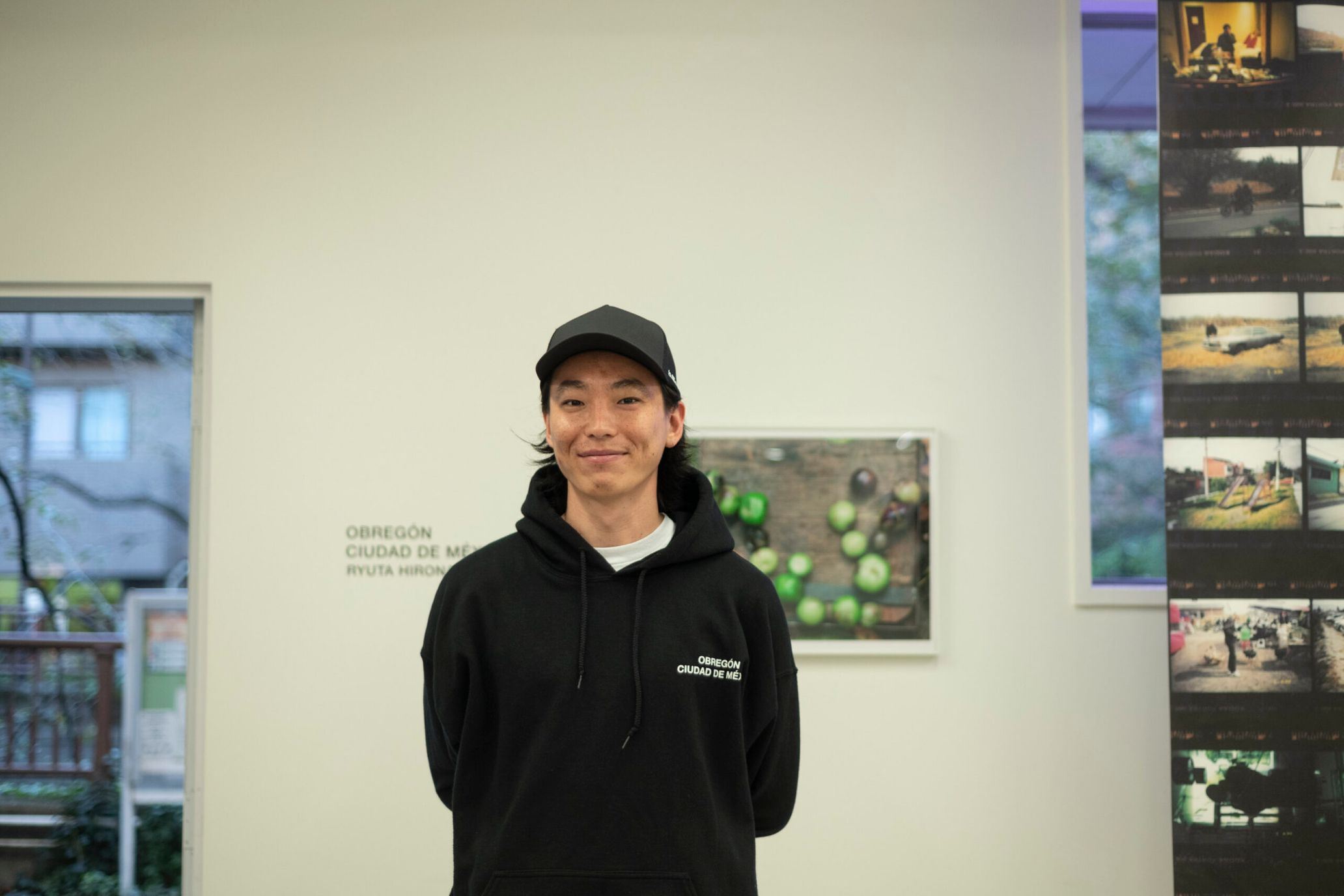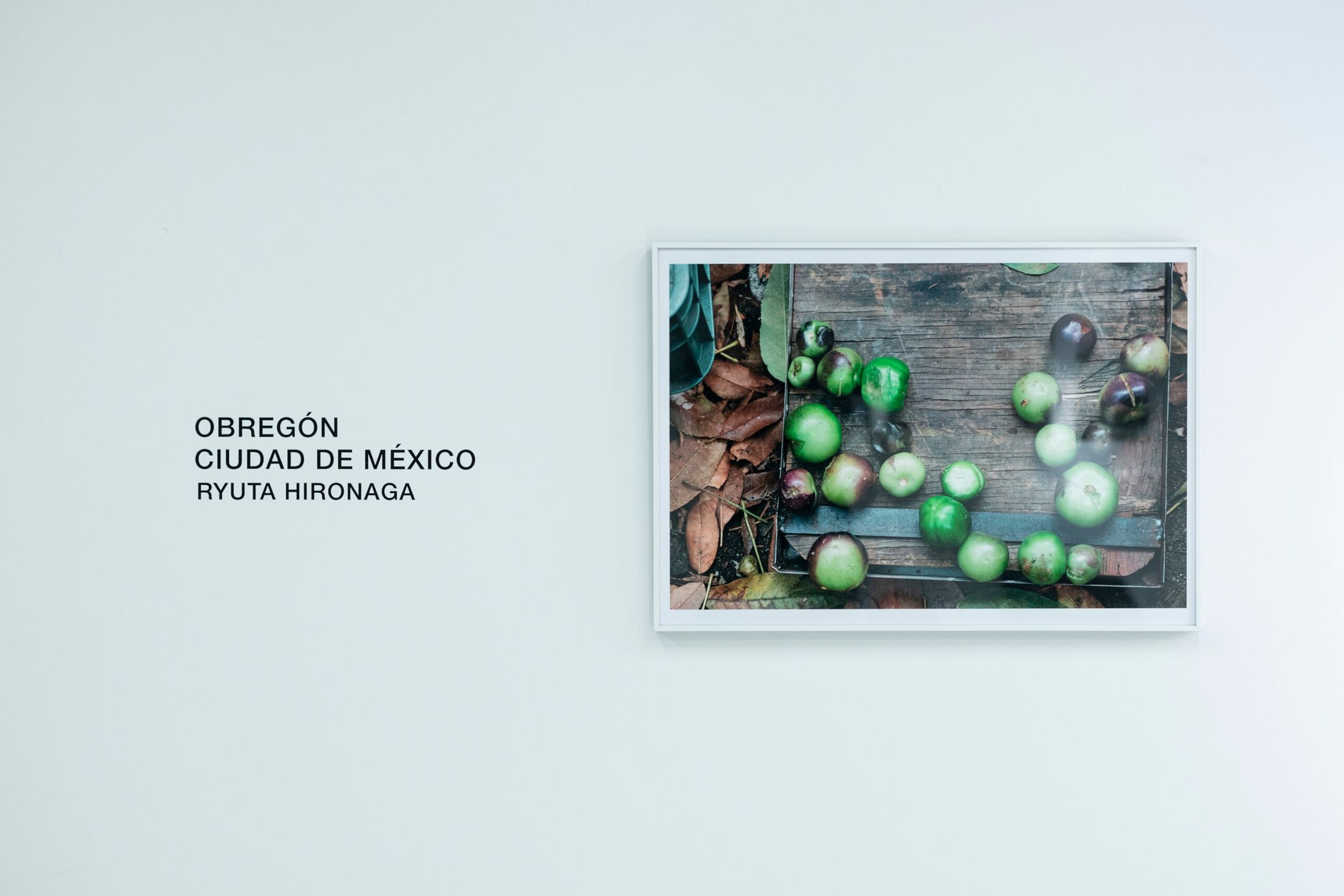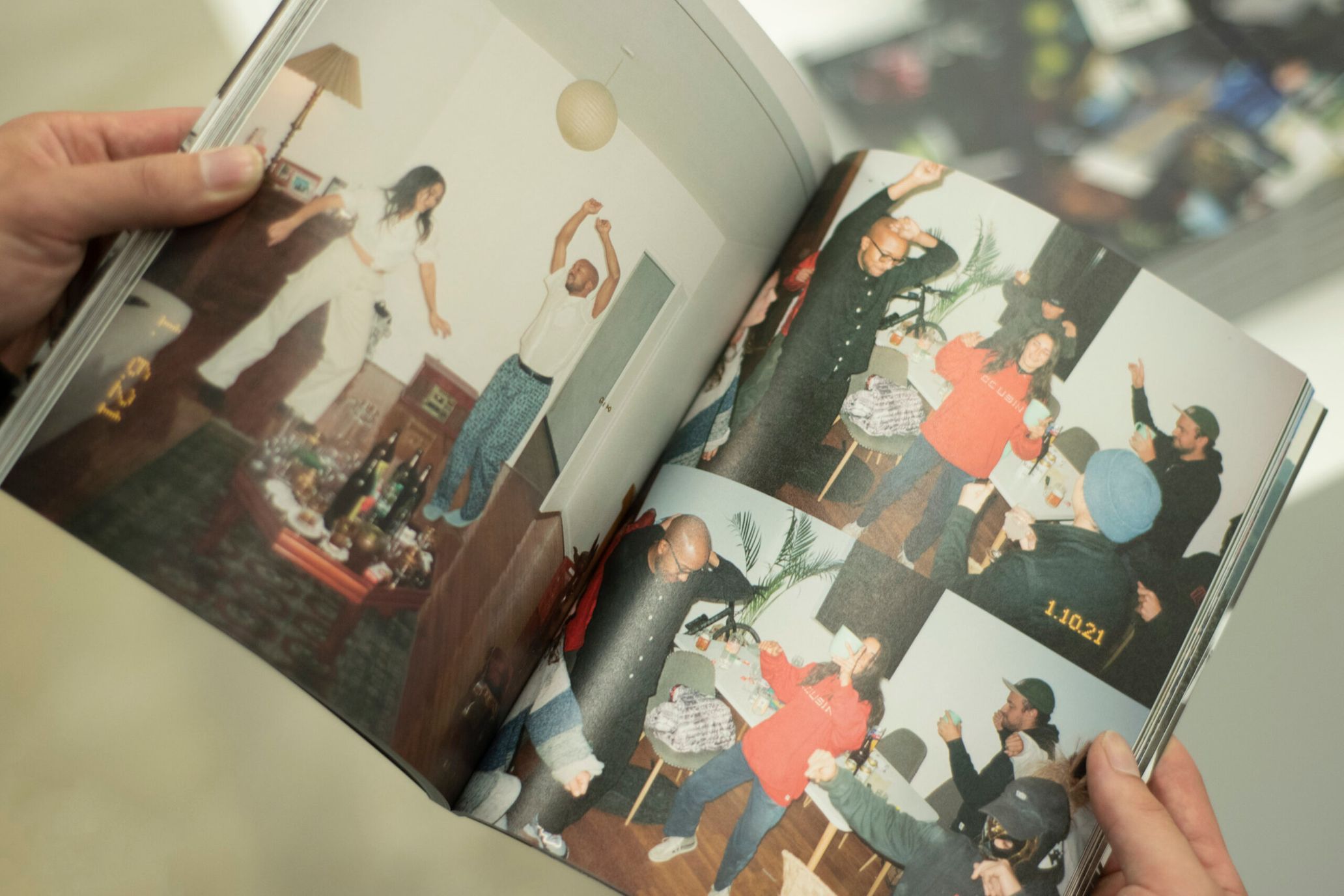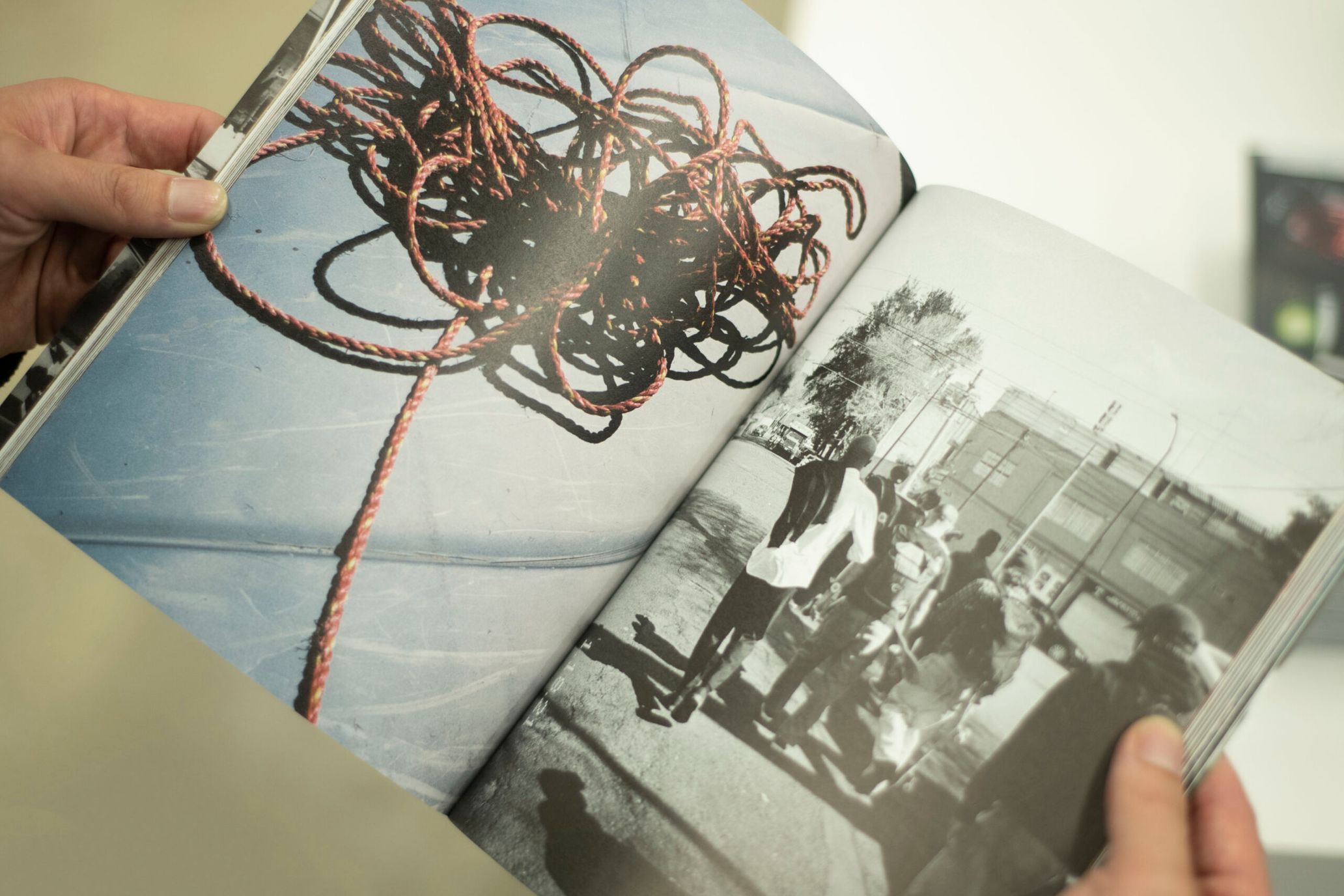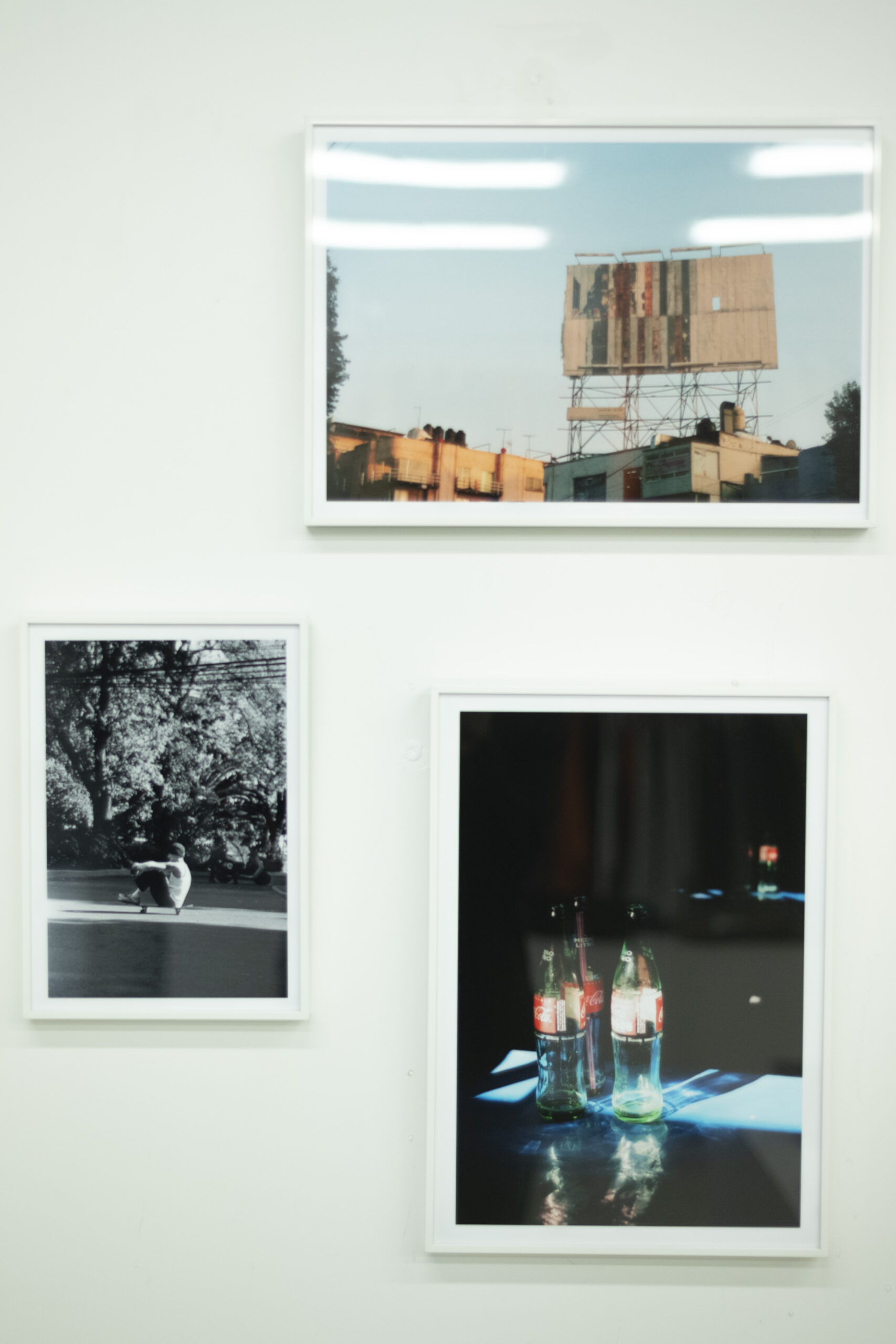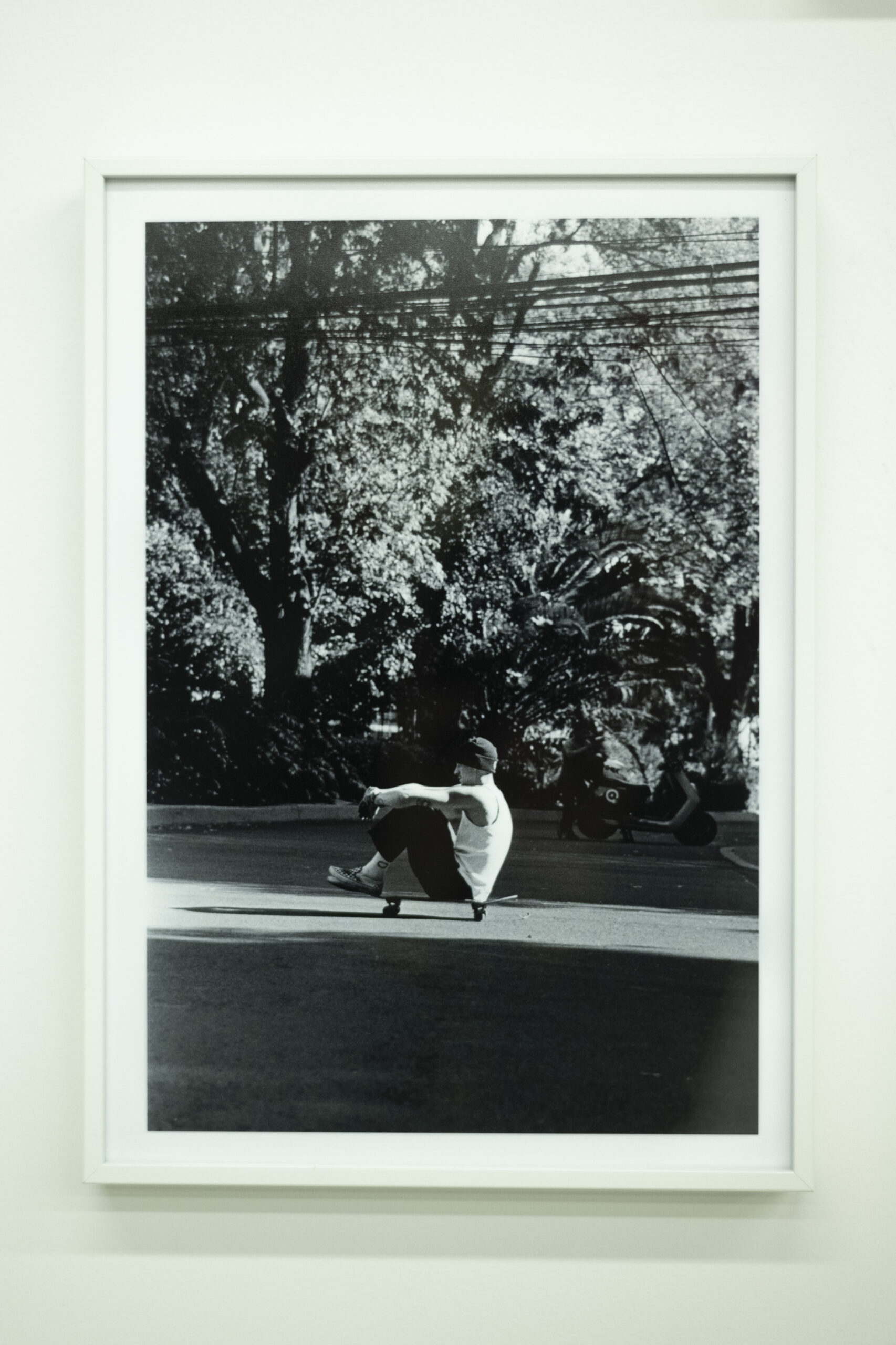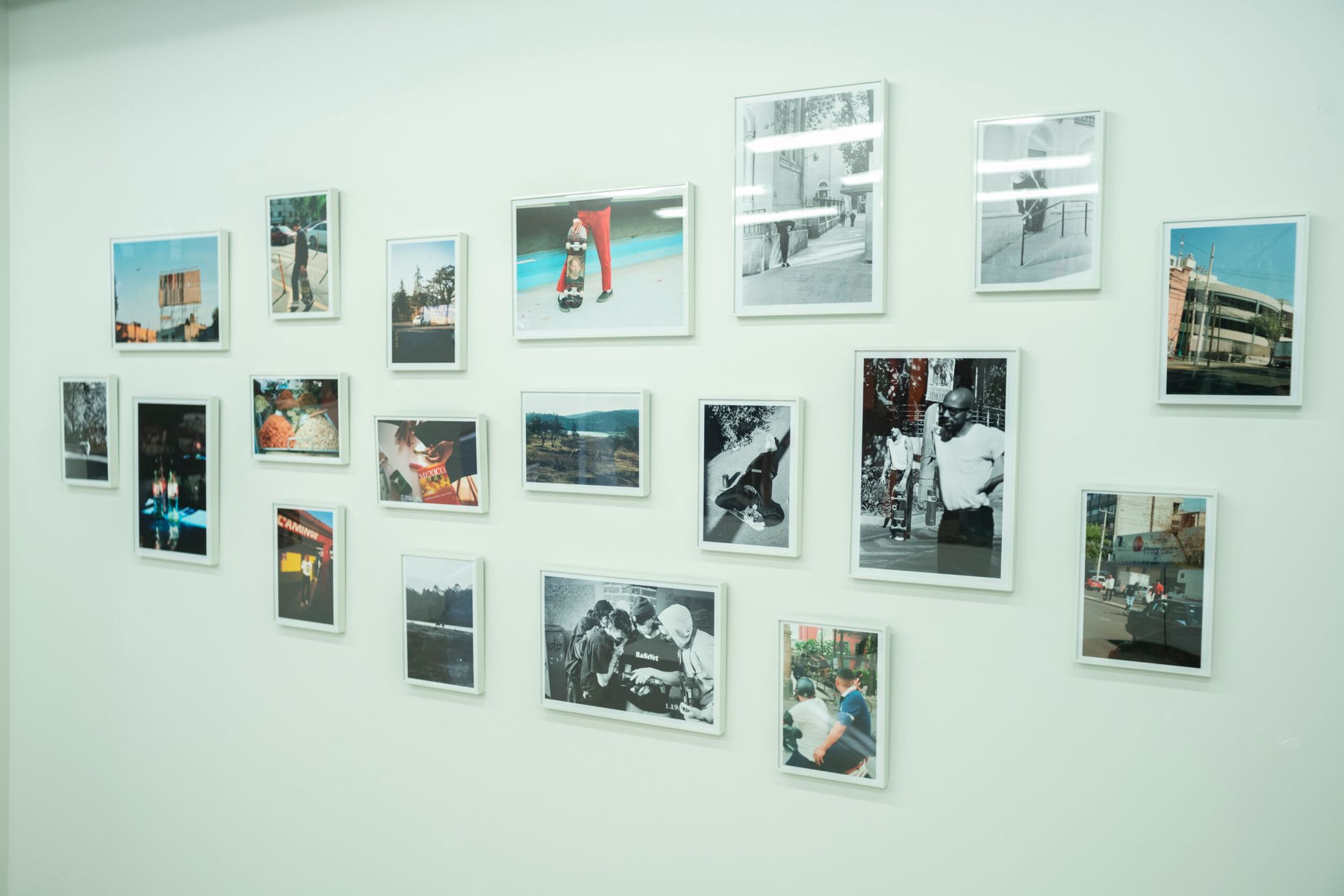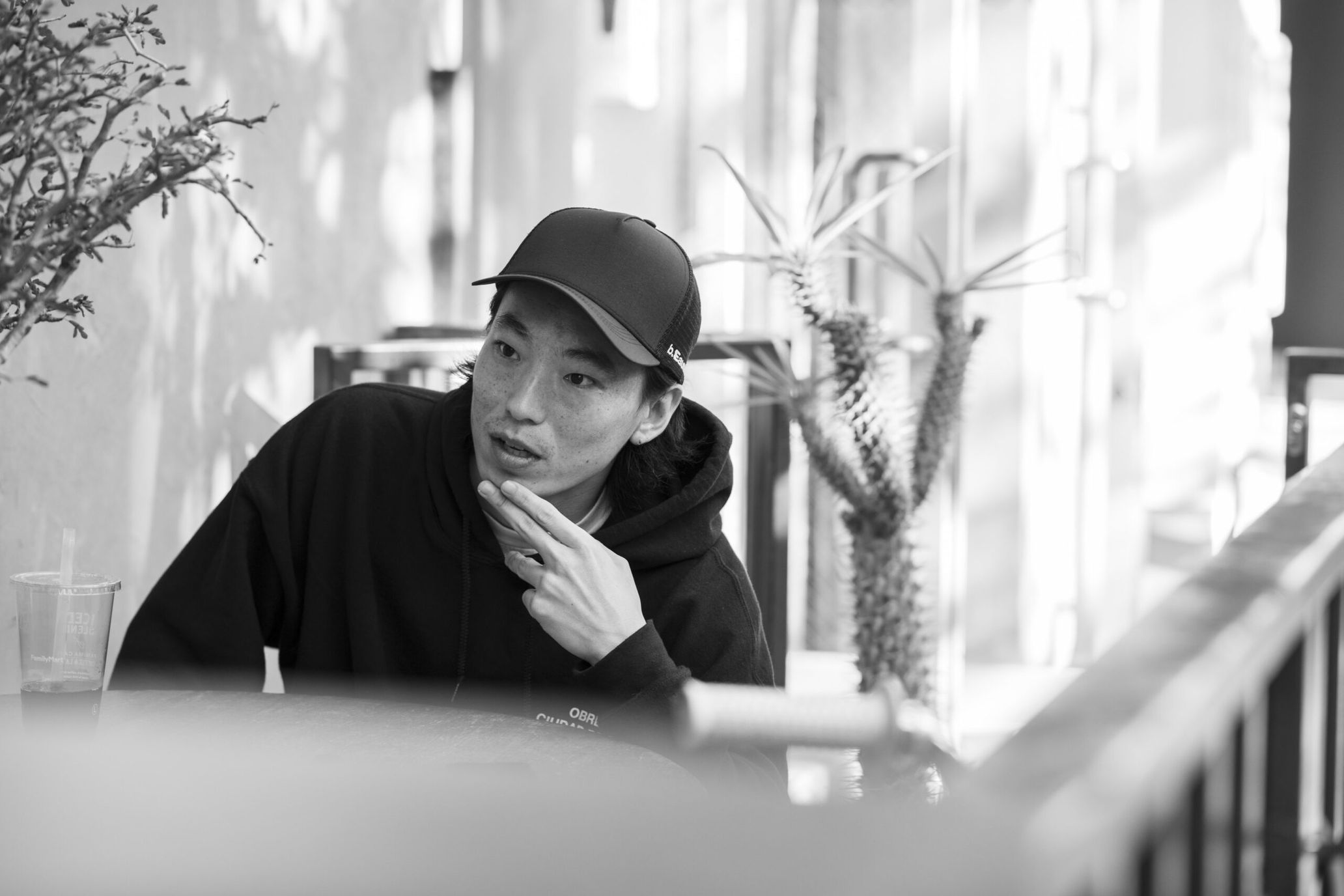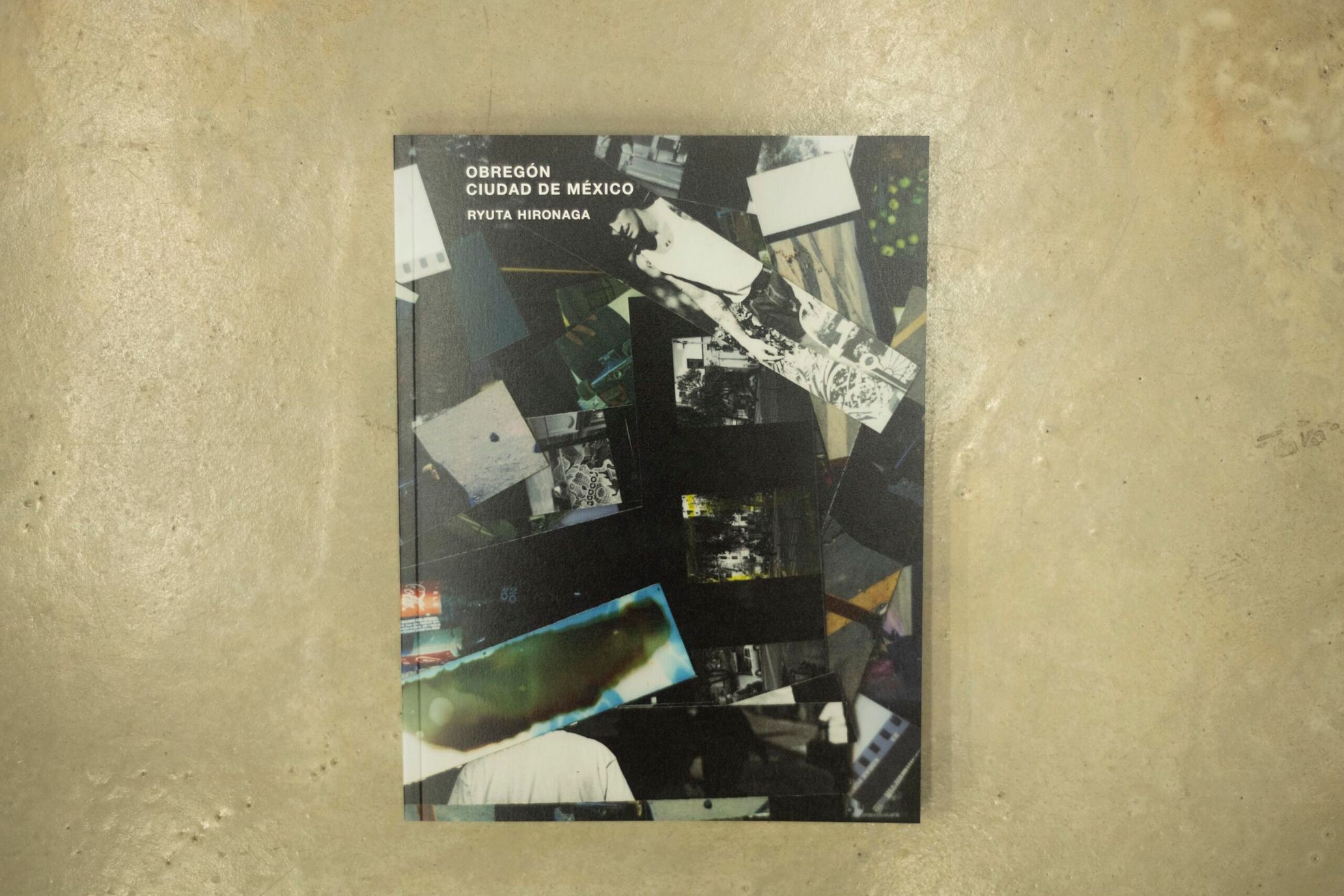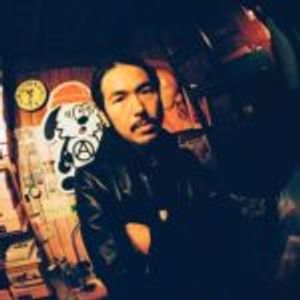Ryuta Hironaga, a photographer based in New York, published his debut photobook titled OBREGÓN CIUDAD DE MÉXICO. In celebration of the publication, he came back to Japan to hold solo exhibitions in Tokyo, Osaka, and Kumamoto during October and November.
The photobook depicts Hironaga’s trip to Mexico with his friend Matt Jackson; it shows skaters from all over the world that he met there and the current sights of Mexico. At the core of the photobook is the theme of skating, but it also features pictures of sceneries, food, and people hanging out. Rather than being a photobook on skating, it’s about one story.
How did he arrive at this expression? We spoke to Hironaga about his experience moving to the States and his work as a photographer.
Documenting a skate trip in Mexico during the covid crisis
——Could you first talk about your first-ever photobook that you published?
Ryuta Hironaga (Hereinafter Hironaga): It’s a photobook documenting my month-long trip to Mexico with my skater friends in January 2021. The title is a reference to a street in Obregón, Mexico. I stayed at a lodge there. I used the name of the place where the story of the photobook began.
——Why did you travel to Mexico?
Hironaga: When I lived in Los Angeles for about six years, I befriended a skater called Matt Jackson, who appears in the photobook. I’m based in New York currently and was going to visit Los Angeles for the first time in a long time. I contacted him at the end of 2020 to see if I could shoot him. He replied, “I’m thinking of going to Mexico.” I felt a strong urge to go too, so I asked him if I could go with him. That’s how my trip to Mexico was confirmed.
——Was there a particular reason as to why you felt that strong urge?
Hironaga: Sort of (laughs). It’s just my opinion, but skateboard culture was born in America, and when you look back at past skate videos and photos, America and Europe stand out culturally. I felt like Mexico must have many hidden spots and streets that haven’t been photographed yet. Maybe I felt curious to discover a hole-in-a-wall.
——You traveled there right in the middle of the pandemic, but were you aware of that?
Hironaga: Of course, Matt and I talked about not going, but we settled on the fact that there were probably sights we could only see then. I could look at the photobook ten years later and reflect on this covid era. It’s key to preserve that with photography.
——Many skaters aside from Matt Jackson are featured in the photobook. Are they all local skaters?
Hironaga: No. When I got to Mexico, my skater friends from LA were there by chance, and we decided to travel together. When we met up with them, their skater friends from Europe were there, too. So, we decided to go around together. Matt and I would go to where they were staying almost every day to hang out and skate. That’s how we spent the month. This photobook was made possible because of this happy coincidence; it manifested because we went at that period.
——You document skate cultures in LA and New York City. Did you see any differences between these two places and Mexico?
Hironaga: The economic disparity is even more acute in Mexico than in America. For instance, there could be a slum in the backstreets of high-rise buildings in the city. There were also street kids hanging out, so it left a deep impression on me.
From a skate spot angle, I saw a lot of spots that people wouldn’t skate at in America. Many places had floors that weren’t fit for skating, but it was so fun skating there. I also had a lot of pictures that I could’ve only taken there. In retrospect, the vibe is similar to America in some respects. What surprised me the most is they didn’t have burritos (laughs). I thought burritos were Mexican food this whole time.
——That’s true, I do associate Mexico with burritos, but they don’t have them (laughs). What did you eat there then?
Hironaga: Tacos, of course (laughs). They had endless options too. I mean, if you put ingredients on top of a tortilla, then you have yourself a taco. The ingredients and taste differed from vendor to vendor, so I didn’t get bored at all.
——You included photos of taco fillings that you must’ve eaten in the photobook. You also included pictures of the patterns on the walls at your accommodation, instead of only having skate photos. You successfully documented your daily life with skaters. Why did you also feature many pictures unrelated to skating?
Hironaga: I take portraits, lifestyle photos, and documentary-styled photos. Meaning I take personal photos. I made this photobook as an extension of that, so I also put pictures of slivers of my life. Of course, I think shots of skate tricks are cool, but many photographers have already shot amazing trick photos. I wanted to take pictures with my perspective and style.
The appeal of the lifestyles of skaters
——How would you describe your perspective?
Hironaga: I feel like the moments before and after a skater does a trick is more meaningful. Like, what their expression is like and how they interact with their friends before and after. How they celebrate with their skater friends after accomplishing a trick. How they spend time at home. I’m interested in those things.
——I see, so that’s how the viewer can see a particular lifestyle in your work.
Hironaga: Yes. In Mexico, I constantly took photos of seemingly mundane things. I have pictures of sights that the residents would consider ordinary. For example, there’s a shot of a car with a rope on it. I wouldn’t have taken that sort of photo if I only wanted to take and publish skate photos. I don’t strictly see myself as a skate photographer, so I took pictures of fruits, landscapes, and other ordinary things and put them together into one piece of work.
——The cover design is also striking.
Hironaga: I asked Matsumi-san (art director Takeshi Matsumi), who I worked with on HOME BOOK, to do the overall design, including the photobook layout. Rather than just designing the book, Matsumi-san helped me in many ways, so it’s like he produced the book for me (laughs). I scanned a bunch of scraps in the darkroom, where I developed the photos to make the cover art. It was a suggestion from Matsumi-san.
The desire to stay true to one’s point of view and continue creating art
——I’d like to know how you came to be a photographer. Skating is at the root of it, yes?
Hironaga: Yes. I moved from my hometown of Kumamoto to Los Angeles, the mecca of skate culture, when I was 22 years old, in part because I skated. I couldn’t speak any English, but I instantly made friends when I went out on the streets with my skateboard. They were separate from the image I had of skaters. I realized they were the real skaters. When I went there, I was shocked to discover that the world I had only witnessed in videos was entirely different. That’s when I started taking photos as documentation and became a photographer. I initially didn’t go to America to take skate photos.
——Did you plan on becoming a photographer right after you started taking pictures?
Hironaga: No, I didn’t at all back then. I had only been doing shoots here and there with a simple camera. But my friends would compliment my pictures and ask if I could give them photos for their zines. I slowly developed an interest and liking in the media of photography. That was the cycle. It was like I gradually became a photographer.
——You moved to America at 22, lived in LA for about six years, and have lived in New York for the past three years. You’ve been living in America for nine years in total, but what sort of city is Tokyo in your eyes?
Hironaga: I moved from Kumamoto to America right away without going to major cities, so I’ve never lived in Tokyo. For me, Tokyo is a city of chaos. My friends who live in Tokyo are all skaters, and they’re wild, so every time I visit Tokyo, it’s chaotic every day, every time (laughs). But if I were to come back from New York, I would currently choose to live in Tokyo. That’s how uniquely exciting Tokyo is.
——You moved from LA to New York, but unlike when you moved from Kumamoto to LA, I assume you wish to continue working in New York as a photographer today. What kind of things do you want to do in New York in the future?
Hironaga: Of course, I’ll continue to photograph skaters’ lifestyles as I’ve done thus far. However, I want to take pictures of things we overlook in our everyday lives or things that exist around us from a more minimal perspective and point of view. I’d like to make such works and contemporary conceptual art, which I’m currently into.
——You mean you want to try your hand at art forms aside from photography?
Hironaga: Yes. Rather than becoming a photographer specializing in skating, I’d like to evolve with skating as my origins. I highly respect Ari Markopolos and Wolfgang Tillmans, especially Tillmans’ work. In the beginning, he took lifestyle photography, but now he’s actively creating art too. That’s why I want to be like him. I’m looking forward to thinking about how I’ll change once I get back to New York and continue photographing. I want to continue creating artworks from my perspective.
Ryuta Hironaga
Japanese photographer based in New York. Ryuta Hironaga takes pictures centering on skateboard culture. His debut photobook OBREGÓN CIUDAD DE MÉXICO was published in October 2021.
Instagram: @ryutahironaga
■Ryuta Hironaga, OBREGÓN CIUDAD DE MÉXICO
(Kandor Inc)
The debut photobook by photographer Ryuta Hironaga. The book documents his trip to Mexico, where he stayed for a month from January 2021. The photographs include his friend and Jason Dill’s personal assistant, Matt Jackson, a skate team of the Russian skate brand Paccbet, skaters from Europe, and the sights and food of Mexico.
Photography: Yuta Kato

